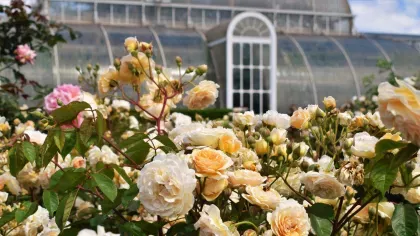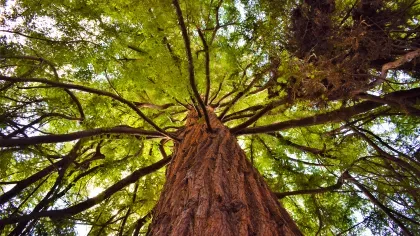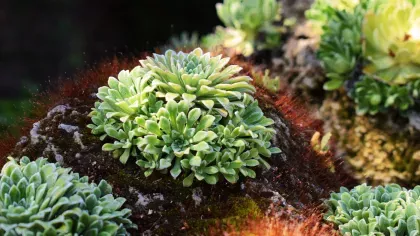27 November 2018
6 plants at Kew that make perfect houseplants
What better gift than a beautiful houseplant? Here are our top plant picks from Kew’s Princess of Wales Conservatory that will grow happily in your home.

Swiss Cheese plant (Monstera deliciosa)
The Swiss Cheese plant originates from the tropical rainforests of southern Mexico.
As its common name would suggest, the leaves are riddled with holes. These help it survive within its natural rainforest habitat, where they're often battered with strong winds and heavy downpours.
Swiss cheese plants also have aerial roots. They help anchor the long weak stem to nearby structures such as trees and provide additional access to water and nutrients.
In the wild, the plant produces edible fruit. It takes up to a year or more to ripen and is said to taste like a combination of banana and pineapple. Beware! The leaves are poisonous, so definitely not for a home with cats or children.
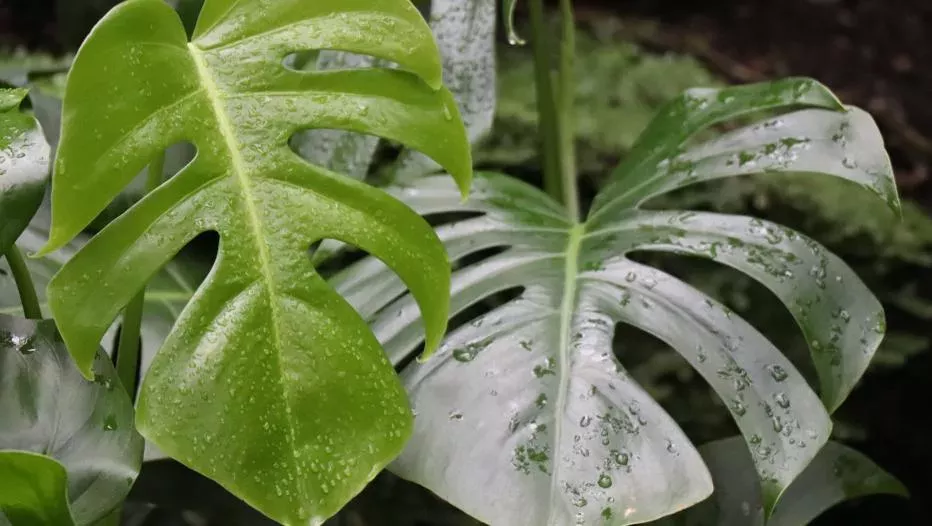
Asparagus fern (Asparagus sp.)
This plant is bit of a faker - it isn't a fern, as it spreads by seeds rather than spores. It's a vine plant native to Southern Africa, found in forests and open coastal areas.
The 'asparagus' part of the name comes from the new growth, which looks like tiny asparagus spears.
This plant technically doesn't have leaves - its 'leaves' are actually tiny flat branchlets called cladophylls.
Alocasia ‘Black velvet’
Also known as the Elephant's Ear because of the shape of its leaves, this tropical superstar is a real stunner with dark leaves and white veins.
It's native to Southeast Asia, originating in the jungles of Borneo. There are an incredible 79 species of Alocasia growing in the wild.
However, it's also a poisonous plant so don't leave in easy reach of roaming hands or claws!
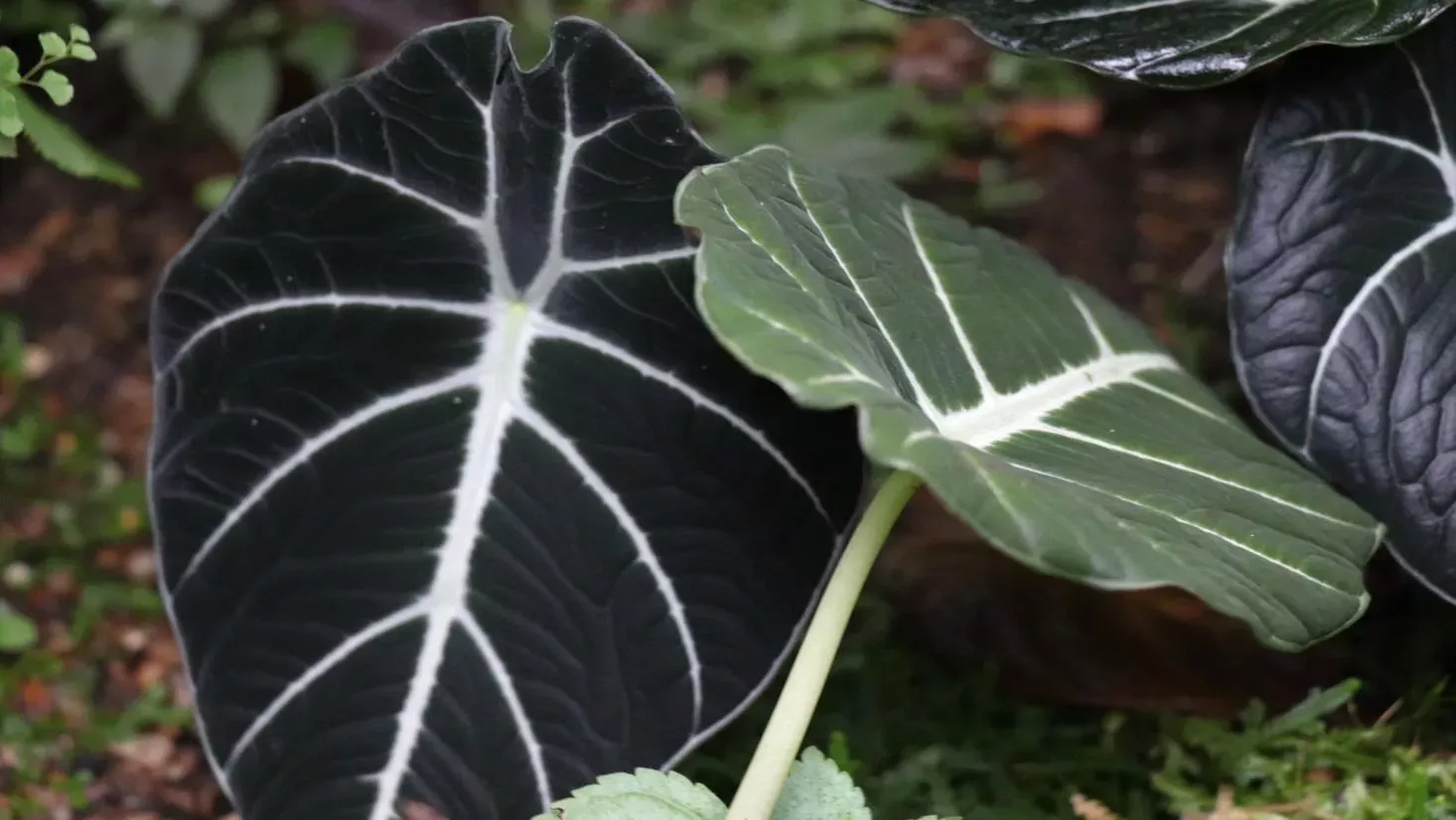
Pink quill plant (Tillandsia cyanea)
A member of the bromeliad family of air plants, they get their name from their plume of bright pink flowers.
Native to Ecuador, these tree-dwellers have small roots designed to anchor themselves to trees.
The roots don't drink up water - instead they gather moisure and nutrients through their leaves.
Keep them happy in your home by misting them with water to recreate the humidity of the rainforest.
Prayer plant (Maranta leuconeura)
Easy to grow, with fun foliage, the prayer plant makes a hassle-free addition to your house plant collection and adds a fun splash of colour.
It has striped leaves which fold together at night in response to lack of sunlight. This prayer-like movement is where the plant earned its common name.
The most common theory about this behavour is that the nightly closed shape allows rain drops to fall through the leaves to the roots.
It also stops the rain from collecting on the leaves, which prevents bacterial growth and keeps the plant from freezing.
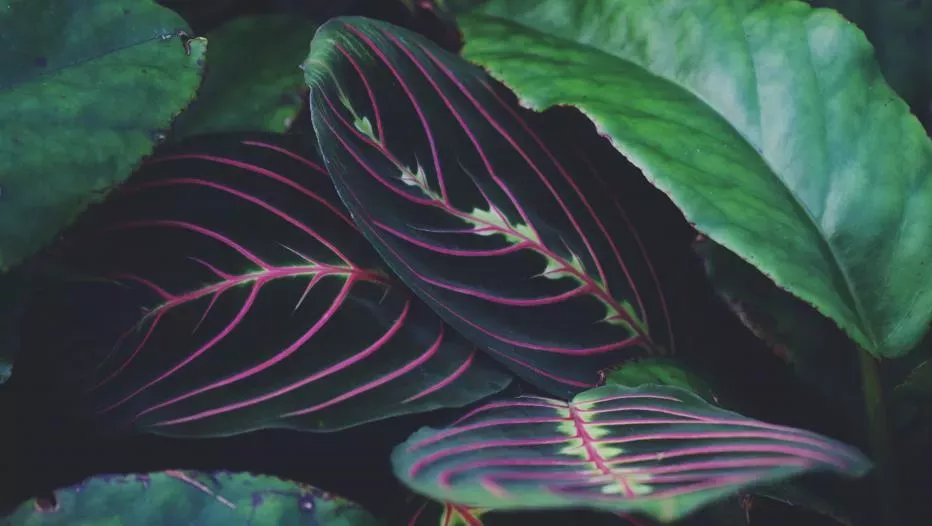
Venus fly trap (Dionaea muscipula)
This is a houseplant with a difference. As the name suggests, these feisty plants trap and digest insects.
Native to the subtropical wetlands on the east coast of the United States, they attract their prey using sweet nectar. When the hairs on the trap are touched, an electric charge closes the trap and its interlocking teeth form a cage.
Once an unlucky insect is caught, flaps close tighter to squash it and enzymes are selected to digest the prey. The trap reopens a few days later once the insect has been digested.
Make sure you keep your fingers away from the traps. Touching them will trick the plant into thinking it's caught a meal and cause the traps to close, which wastes its precious energy.
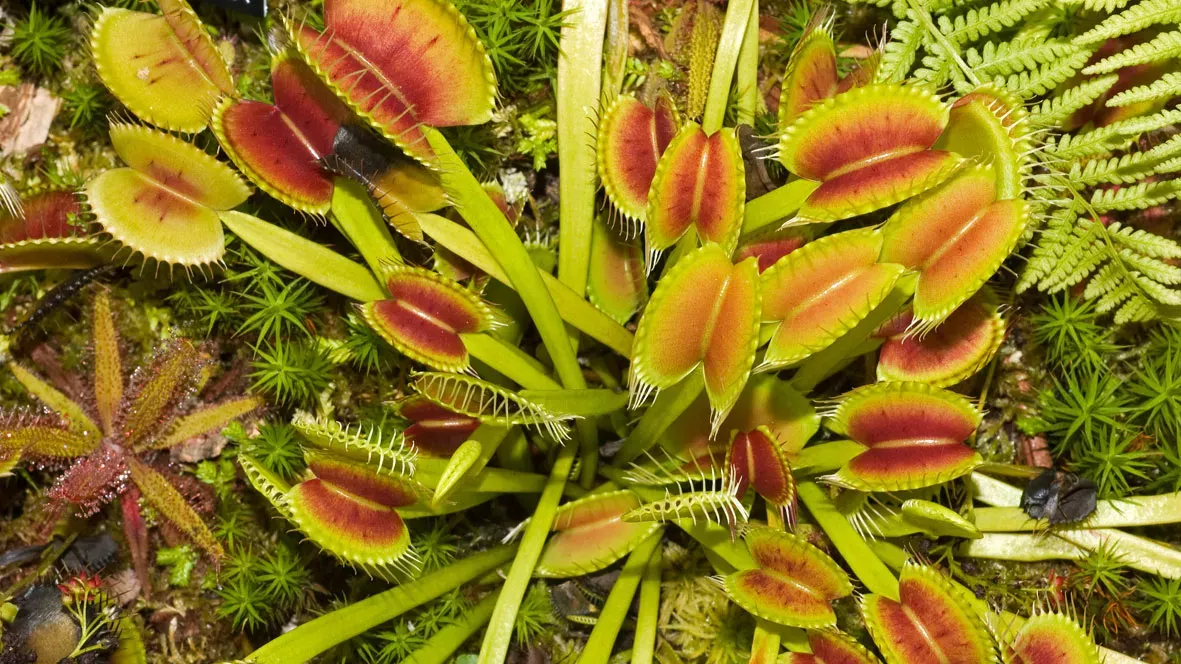
Want to create a houseplant haven at home?
Learn top tips for providing the perfect conditions for your plants at home with James Wong and Kew expert, Alberto Trinco.
